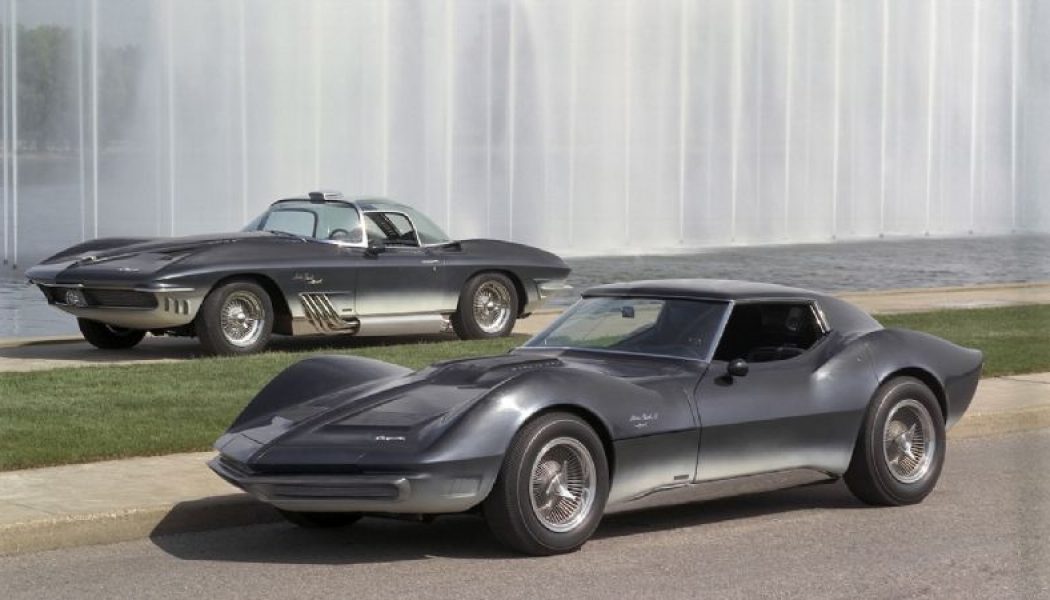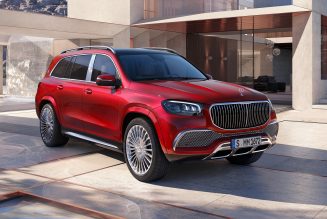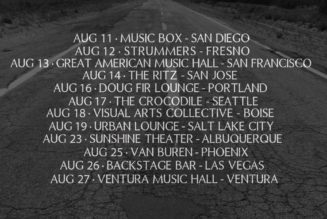One of our favorite non-automotive times of the year is upon us: Discovery’s Shark Week 2020 began on Sunday, Aug. 9. As such, we’re thoroughly in the mood for some automotive sharkdom, and we figured this is a great time to look back at some of Chevrolet’s cool shark-themed concepts of the 1960s.
1961 Mako Shark concept: Selling the new Corvette
Legend has it that the original Mako Shark concept car’s name and color scheme were inspired by the real thing—specifically, a mako shark that GM styling chief Bill Mitchell caught himself and had mounted in his office. The story goes that Mitchell insisted that the blue-grey-white blending on the show car exactly match the shark, and when his staff couldn’t get the car painted to his satisfaction, they stole the shark from his office and repainted it to match the car. Mitchell, the story goes, never knew the difference.
The Mako Shark, otherwise known as XP-755, was built in 1961 as a preview of the second-generation Corvette, which was due as a 1963 model. The styling theme for the redesigned sports car had long since been developed, as seen on the 1957 Q Corvette concept and the 1959 Stingray racing car. The Mako Shark’s job was to travel the auto show circuit and get the public ready for the look of the new Corvette. The “gills” ahead of the front fender and the double-bubble roof were unique to the concept, as were the flip-up “brake flaps” on the deck lid, but the general shape was close to the production C2.
In keeping with its intended purpose, the Mako Shark was fully functional, and you can see it driving in this clip from an episode of Route 66 that aired in the fall of 1961. The XP-755 was modified over its lifetime, losing the double-bubble roof and gaining a new hood and a circular emblem in the grille (and a miniature chrome bumper at the edge of the nose to protect it). The car was ultimately powered by a 1969-vintage ZL1 427-cubic-inch (7.0-liter) big-block. Today, the Mako Shark I resides in the collection of the General Motors Heritage Center.
1965 Mako Shark II: The C3 Corvette emerges from the depths
In 1965, Chevrolet produced the Mako Shark II. Two of them, actually. First a non-running full-size model and then a running, driving prototype with a 427-cubic-inch V-8 under the hood. Unlike the original Mako Shark (now known as the Mako Shark I), the non-runner was the car that got management approval for the third-generation Corvette‘s styling, which was subsequently scheduled for production as a 1967 model, though development was eventually delayed until 1968.
Testing of the Mako Shark II revealed modifications required for production. The front fenders and rear window were reworked for better visibility, while the nose was reshaped to reduce front-end lift. Still, if you compare the Mako II with the production C3, it’s remarkable how close the two cars appear. Not everyone was happy with the changes, and a couple of companies produced kits to turn the latest Corvette into something that more closely resembled the show car. More recently, a running replica was built by a Corvette enthusiast in Switzerland.
Unlike the Mako Shark I, the Mako Shark II is no longer in existence—not exactly, that is. The non-runner was scrapped, while the running car was restyled to become the 1969 Manta Ray concept, which can now be found with the Mako Shark I in the GM Heritage Center.
1964 Chevy II Super Nova: A shark by any other name
In between the two Mako Sharks, Chevrolet created another shark-themed concept based on the Chevy II Nova coupe, with styling that followed themes established by the 1963 Buick Riviera. Officially, the car was known as the 1964 Chevy II Super Nova. Unofficially, it was known simply as the Shark.
The Super Nova was shown at the 1964 World’s Fair, but alas, archrival Ford was showing its own sporty two-door across the hall. Ford’s Mustang was a production-ready model, and while Chevrolet didn’t take it seriously at the time, its runaway sales proved that Chevy would need something better than a restyled Nova in order to compete. Chevy went back to the drawing board and developed the 1967 Camaro. However, several of the Super Nova’s styling cues were seen on the facelifted 1966 Chevy II.
The caption for the photo above, taken at GM’s space-themed World’s Fair display, shows the Super Nova with its “performance analyzer capsule” and accurately predicts a future innovation: “In the year 2000, mechanics will be highly-trained technicians capable of operating the electric performance analyzer capsule. A computer supplies the DelcoNauts with information concerning the car’s operation according to manufacturer’s specifications, tells them what needs to be repaired, and how much the service will cost the customer.” GM was right about the device but off on the timing, as the company implemented a fledgling on-board diagnostics system in 1980, and OBD-II became mandatory in 1996.
Chevrolet’s Shark Concept Cars
Mako Shark
Mako Shark II
- Introduced in 1965
- Served as the styling concept for the third-gen Corvette
- Running version restyled as the 1969 Manta Ray concept
- Manta Ray preserved at the GM Heritage Center
Chevy II Super Nova
- Introduced in 1964
- Previewed updates to the 1966 Chevy II and the 1967 Camaro
- Modeled a primitive version of on-board diagnostics (OBD)
- Disposition unknown










